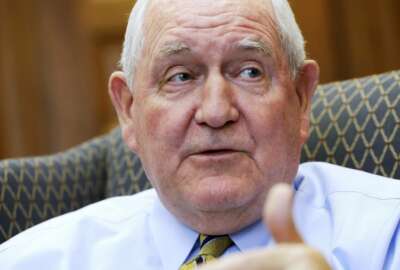

The federal workforce is more satisfied with some work-life programs than others, but employees who participated in these programs said they're more satisfied w...
Federal employees who telework or use one of the available government work-life programs are generally happier and more engaged — and receive higher performance results — compared to employees who do not or cannot take advantage of those offerings.
Work life programs also have a positive impact on agencies’ abilities to recruit and retain top talent, according to a new study from the Office of Personnel Management.
Specifically, federal employees who telework or participate in one of their agency’s wellness programs are more likely to receive a rating of “exceeds fully successful” on their last performance appraisal than those who did not participate in one of these programs, according to OPM’s inaugural study of government work-life programs. About 76 percent of teleworking employees reported high performance ratings compared to 72 percent of non-teleworking employees.
In addition, employees who engaged in telework, work flexibilities or health and wellness programs were significantly more satisfied with their jobs. Anywhere from 75 to 79 percent of employees who participated in one of these programs said they were happy with their jobs, compared to 67 to 72 percent of federal workers who didn’t engage with these programs.
But perhaps more importantly, more employees who participated in a wellness or work flexibility program said they were more likely to stay at their agencies than their colleagues, according to OPM. About 66 percent of employees who participated in a health and wellness program said they were more likely to remain at their agencies compared to the 62 percent who had never engaged with one of these activities. The same was true for employees who teleworked: 68 percent said they intended to stay compared to 62 percent.

These programs are important to get right, OPM said, because one out of three federal employees say they have little to no flexibility to manage their work schedules, use an alternative work schedule and take time off to attend to personal or family matters.
OPM surveyed more than 64,000 federal employees about their participation in a wide variety of government work-life programs, which included telework, work schedule flexibilities such as compressed work schedule or job sharing arrangements, the Employee Assistance Program (EAP), health and wellness programs, and family and dependent care options.
Federal employees are significantly more satisfied with work flexibility offerings than any other work-life program. Nearly 80 percent of employees said they were happy with their compressed work schedule, for example, while 76 percent said they were satisfied with their agency’s telework experience.
Far fewer federal employees said they were happy with health and wellness programs — 38 percent — and 30 percent cited satisfaction with family and dependent care programs.
Simply offering work-life programs at the office doesn’t guarantee employees’ satisfaction, OPM said, and employees are typically more satisfied when they experience direct benefits or conveniences of a specific program.
Most federal employees — or 82 percent — said their supervisors were responsive to their personal needs, but less than half — or 47 percent — believe their managers support their use of work-life programs.
The federal workforce generally viewed their senior leadership as having less support for these programs.

The Agriculture Department, for example, recently changed its much-lauded telework policy and requires USDA employees to be in the office four days a week.
“Supervisors may lack awareness and understanding of agency-specific work-life programs and how work-life programs can be utilized to simultaneously meet the agency’s strategic goals while supporting employees’ work-life needs,” OPM said. “Creating an organizational culture that supports work-life effectiveness requires raising awareness on the use of work-life programs, change management, adopting new approaches to management education, training and leadership role modeling.”
Use of government work-life programs vary, and employees’ awareness of these programs is the largest impediment to participation, OPM said.
More federal employees take advantage of a health and wellness program, such as a physical activity sponsored by their agency or a health screening. The Employee Assistance Program (EAP), which offers confidential assessments, counseling, community referrals and other services to federal workers dealing with a personal or work-related program, is least utilized. More federal employees, however, said they simply don’t have a need for the program, while fewer workers said they’re not utilizing EAP due to privacy concerns or a lack of information.

Though OPM said it sees areas where government can improve, it recognizes the federal workforce clearly has an interest in these programs, and it wants agencies to take note.
“For the federal government to remain competitive, I ask that all federal agencies across government continue to determine the need for, and evaluate the effectiveness of work-life programs through systematic collection, analysis and use of empirical information to determine how to invest resources and improve decision-making,” former acting OPM Director Kathleen McGettigan wrote.
Specifically, agencies should consider how they can increase employees’ awareness of these programs and designate leadership “advocates” to expand them across their organizations. In addition, agencies should also “consider ways in which culture and organizational support for the expanded application of work-life programs can increase and improve,” OPM said.
OPM itself plans to develop governmentwide training and a toolkit for these programs, which it will give to agency managers and senior leaders.
Copyright © 2024 Federal News Network. All rights reserved. This website is not intended for users located within the European Economic Area.
Nicole Ogrysko is a reporter for Federal News Network focusing on the federal workforce and federal pay and benefits.
Follow @nogryskoWFED

